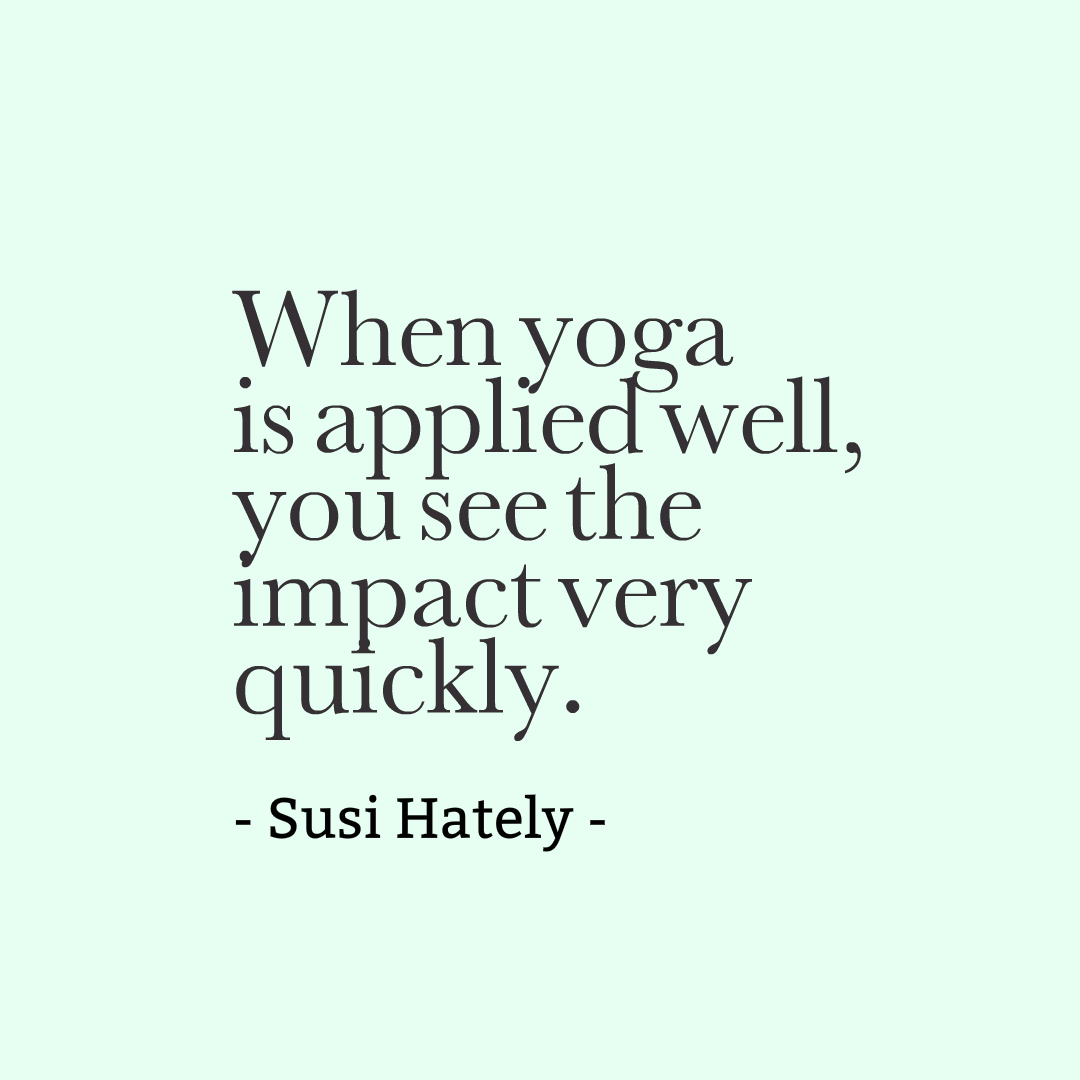By Susi Hately, BSc. Kinesiology, C-IAYT
 One of the most common questions I receive is “what am I supposed to do with my abdominals during a yoga practice?”. Below is a question and response from my current Online I Love Anatomy Program.
One of the most common questions I receive is “what am I supposed to do with my abdominals during a yoga practice?”. Below is a question and response from my current Online I Love Anatomy Program.
Question: I always hear that our abs should be strong. Does this mean our abs should be held tight during our entire class? It is difficult to hold my abs and breathe properly so I must be doing something wrong.
Susi’s Response: We want our bodies to be responsive to the ever changing load around us, whether in yoga, walking the dog, shoveling snow, lifting weights, experiencing “Life”. What you get to explore is when you are “held tight”, does “responsiveness” go up or down?
You’ll notice that I didn’t have a “cut and dry” answer – cues land differently for people, and what one person hears and does with “held tight” can be very different than what another person does with “held tight”. It is important to experience and explore for yourself and notice the result that comes.
With that said, here is something more to chew on.
It is very common for people to consciously engage their abdomen in anticipation of a movement. When I ask them why they are doing this, their response is that they are engaging their core to protect their back. If I delve in further with them, we uncover that they are actually bracing against the possibility of hurting their back. This may seem subtle, but in all my years of teaching people how to reduce and eradicate pain, this subtlety is really important.
Why?
The person in above paragraph may think they are engaging their core, when in fact they are “locking and loading”. “Locking and loading” is my term for someone gripping, overly bracing and overly using the latissumus dorsi, obliques, rectus abdominus, and glutes. Breath holding is common as is the pulling in of the ribs, and/or the navel to spine. When standing in Tadasana, all this pulling and locking and loading can “feel right” because they feel an increase in intra-abdominal pressure, which can feel like support.
This is often not the case. What is often happening is resistance and rigidity, which can slow down progress, slow down pain reduction, and slow down the returning to the life a person wants to lead and live.
So what is the way out of this? What is the way to more responsiveness?
Remember that core is really about being responsive. Being able to respond to the various twists and turns, the changes in speed – stopping, starting, increasing or decreasing speed. It is about being able to get down onto the floor and back up again. Being rigid and restrictive doesn’t enable that.
1. Do only that which you need to do, and nothing more – Dial back the effort from one of grippy and rigid. You may initially do less. So be it – you’ll make greater gains.
2. Move only as far as your tongue is soft – Building upon point 1. This may be a challenge – not everyone will try it. If you do you may have some cool insights about how your hold your body in movement.
3. Do your best to not anticipate in your movement. This also builds upon point 1. Allow for your body to respond to the load you are placing on it. If your body grips, consider that the load is too great. When you back off, you will likely make great gains.
As you practice this way, you will fine tune your neuromuscular communiation and coordination. Your body will feel better, your mind will come to rest, and you’ll wonder where all this new-found energy is coming from.
Have fun with this.
Susi
